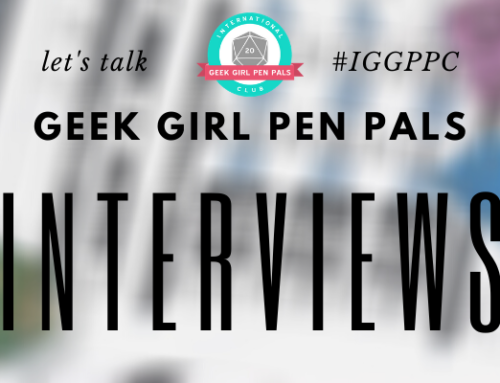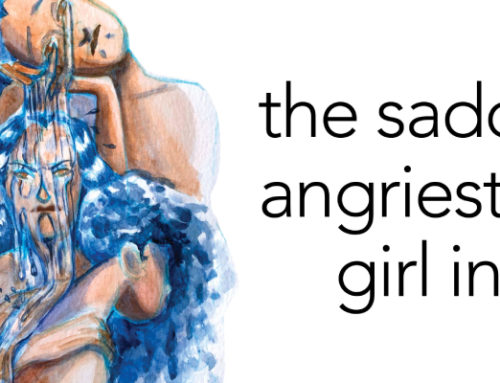Welcome back! This week’s character is somebody who never fails to make me, or most of the DC Universe, smile. He’s everyone’s favourite acrobat, his butt is the subject of a zabillion Gail Simone tweets, and now he’s a superspy. Here’s your introduction to Dick Grayson.

image source: DC Wikia
Fast Facts:
Name: Richard John “Dick” Grayson
Species: Human
Debut: Detective Comics #38 (April 1940) – as Robin; Tales of the Teen Titans #44 (July 1984) – as Nightwing; Batman: Battle for the Cowl #3 (July 2009) – as Batman; Grayson #1 (September 2014) – as Agent 37
Abilities: Highly trained and exceptionally skilled acrobat, incredible martial artist and hand-to-hand combatant, expert with most forms of weaponry, and trained by Batman to be a detective (which is basically a superpower).
Motivation: Dick and his parents were known as The Flying Graysons, and they were famous acrobats. His parents were killed by mobsters mid-performance. Bruce Wayne happened to be in attendance that evening, and took young Dick Grayson under his wing. Dick asked to become Batman’s sidekick, and after extensive training, becomes the boy wonder Robin.
Continuity Confusion:
Thankfully, Dick’s back story has remained more or less the same throughout publication history. The confusing part comes in the many different mantles he’s held.
Robin:
Dick Grayson began as Robin, Batman’s young sidekick. After his parents were tragically murdered, Bruce Wayne adopted Dick Grayson, and raised him as his own. Dick eventually sussed out what Bruce was doing when he left the manor at night, and begged to join him. Bruce gave him extensive training, and Robin was born. Dick enjoyed his first year as Robin a little too much, treating their crime fighting adventures a little too lightheartedly. An encounter with Two-Face temporarily sidelined him, and Dick came back more focused than before. Dick was one of the founding members of the Teen Titans, and despite being one of the few members on the team without superpowers, he was their first leader.
Nightwing:
Pre-Crisis Dick Grayson decided to drop the Robin mantle, and membership in the Teen Titans, in order to discover who he is without Batman. After being attacked by Deathstroke, Dick decided to adopt a new name and wear a new costume. He choose Nightwing after Superman relayed a story of a Kryptonian hero with the same name. He defeated Deathstroke and returned to the Teen Titans, becoming their leader once more.
Post-Crisis Dick Grayson left Batman and the role of Robin after a mission with Two Face went horrifically wrong. He wound up with Superman, who relayed the story of Nightwing, a hero from Krypton.
As Nightwing he was the leader of the New Teen Titans, as well as the Outsiders.
Batman:
Bruce Wayne is far from being the only person to hold the mantle of Batman. After Bane broke his back during the Nightfall arc, Batman asked unstable hero Azrael (Jean-Paul Valley) to fill in while he recovered. For a time, Dick Grayson also wore the cowl. Years later, Batman was thought dead, and Gotham was in chaos. Gotham’s heroes were trying to maintain order, but without Batman the criminals felt they had free reign. Dick eventually re-donned the cape and cowl, and took Damien Wayne, Bruce’s son, on as his Robin.
Nightwing Again:
When the DC Universe was rebooted and the New 52 launched, Bruce Wayne was restored as Batman, and Dick was Nightwing yet again. As Nightwing, he went up against the mobster who had his parents killed as well as the Court of Owls, a secret organization which once had designs on his future. His complicated relationship with Barbara Gordon (Batgirl) was also explored before the events of the Forever Evil crossover stepped in.
Agent 37:
Forever Evil was a massive crossover that affected nearly every single DC title, including Nightwing. He was unmasked and his secret identity revealed to the world, and later he was apparently killed by Lex Luthor. As it turns out, he had faked his death, with the help of Batman, and escaped. With the aid of a digital face mask, Dick infiltrated the spy organization Spyral, and is secretly feeding information about the organization to Batman.
Good/Bad/Morals for Hire?
Dick is such a good guy he’d be boring if he weren’t so charming. Where Batman swore revenge for the untimely death of his parents, Dick swore justice and that seems to mark the difference in their approach to crime fighting. Batman operates outside the law, and gets a lot of his intelligence through means civilians would call “torture”. Dick strongly disagrees with this method, preferring less extreme ways of gathering information.
Biggest Allies:
Dick began costumed crime-fighting at a very young age, and a huge number of heroes think of him as a younger brother. He’s also got quite the reputation as a lady’s man (sometimes accidental, sometimes on purpose). Basically, he’s everyone’s ally. He had an on-again/off-again relationship with Barbara Gordon (Batgirl and Oracle) for many years, as well as a relationship with Starfire. Dick worked closest with Bruce, when Dick was Robin and Bruce was Batman. He also developed a close relationship with Damien Wayne, developed when Dick was operating as Batman. He selected Damien to be his Robin in the face of a lot of opposition from the rest of the Bat-family, but was insistent that he could help the troubled 10-year old become better adjusted. And he did.
Trigger Warning:
Spoilers for the Nightwing series than ended in April of 2009.
Comics don’t have a great track record when it comes to presenting and dealing with sexualized violence or intimate partner abuse. If you’ve been reading other “Intro To…” articles you’ve probably noticed a pattern in this respect, which is why this section was added. It’s sometimes hard to turn to comics for fun when they fail at adequately addressing sensitive and important issues. Those failures can often be as triggering as reading about the abuse itself. Nightwing #93, and the issues that followed, are no exception. Nightwing was raped on panel. He had allowed a villain to die, compromising his own value system. Worse, Tarantula, a vigilante he had tried to take under his wing was the one who fired the gun. After the villain died, Nightwing stumbled up to the roof and collapsed. As he muttered “no” and “stop”, Tarantula ignored his pleas and sexually assaulted him. The issues that follow ignored the fact that the encounter was non-consensual. DC Comic’s response to those unhappy with the depiction of rape without consequence was remarkably insensitive. Readers were told that what Tarantula did wasn’t rape, it was just “non-consensual”. This aspect of Nightwing’s history did not make it to the New 52, thankfully.
What To Read:
Robin: Year One (2002) (Pre-Crisis/Post-Crisis)
This is by far one of the best Robin stories out there. Writer Chuck Dixon doesn’t rehash Robin’s superhero origins, which were already detailed in the pages of Batman in the 1940s. Instead, the plot focuses on Robin after he’s become very skilled at the position. Most of the work is narrated by Alfred, which gives a really sweet glimpse into Batman and Robin’s lives from a perspective not often shown.
Battle for the Cowl (2009) (Post-Crisis, literally)
Batman was presumed to have died during DC’s Final Crisis event, and Gotham had erupted in crime and chaos. With Batman gone, villains had overrun the city. Gotham’s other heroes tried to maintain order, but without Batman to strike fear in their hearts, little could be done to control the supervillains. An imposter-Batman began stalking the streets, and in the end, one of the Bat-family assumes the cowl until Bruce’s return.
Batman and Robin (2009-2011) (Post-Crisis)
This series explored the relationship between Dick Grayson’s Batman and Damien Wayne’s Robin as they struggled to maintain order in Gotham during Batman’s absence. The dynamic between the two is an interesting one – with Dick’s Batman being the wisecracking jokester and Damien’s Robin being dark and stoic. The run also highlighted Dick’s kind heart – he was willing to take a chance on Damien despite his rather troubled upbringing when no one else would, and it ultimately paid off.
Batman: The Black Mirror (2011) (Post-Crisis)
The Black Mirror is my favourite Batman graphic novel of all time. Writer Scott Snyder and artists Jock and Francesco Francavilla tell a thoroughly creepy and suspenseful tale of a series of murders occurring across Gotham, with the killer always one step ahead of Batman and the rest of the Bat-family. In the end, it turns out that Batman is up against an evil as old as Gotham itself. Equally as suspenseful and eerie is the backup story featuring the return of Jim Gordon’s psychopathic son, who claims to be cured.
See Him Now:
Nightwing (2011-2014)
Technically, this isn’t a current title, but it was the most recent Nightwing run, and does establish his character within the New 52. It’s also a fairly entertaining read. Issue #30, the final issue, sets up the current ongoing title.
Grayson (ongoing)
At the end of Forever Evil, Dick faked his own death. He infiltrated the international spy organization Spyral (clever, eh?) and works as Agent #37 under his former partner, Helena Bertinelli. It’s an incredibly fun yet suspenseful series. The first four issues have been collected as one volume called Agents of Spyral and it’s available at bookstores and comic book shops now.




[…] Geek 101: Introduction to Dick Grayson […]